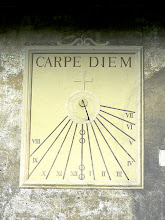


FOTOS DE BUDAPEST :
-----------------
El Parlament
El Pont de les Cadenes
Vista de Budapest des de Gellert Hill
_____________________________________
BUDAPEST, CAPITAL D'HONGRIA
****************************
La història coneguda de Budapest es remunta a la ciutat romana d'Aquincum, fundada a les rodalies del 89 sobre d'un antic campament celta, prop del que després seria Óbuda.
De 106 fins al final del segle IV, fou la capital de la província de la Pannònia inferior (en llatí Pannonia).
Cap a 896, els magiars, avantpassats del poble hongarès actual, colonitzen la regió sota el comandament d'Árpád, poblant la conca pannònia així com el sector d'Óbuda.
Hongria es funda un segle més tard, a l'any 1000, amb la coronació del seu primer rei, Esteve I.
Malgrat la seva destrucció gairebé total en resposta a una invasió mongola el 1241, i el desplaçament de la residència reial a Visegrád el 1308, la ciutat esdevé la capital del país el 1361.
La conquesta de la major part del país al segle XVI per l'Imperi otomà interromp el creixement de la ciutat.
Pest cau en mans de l'invasor pel sud el 1526.
Buda, defensada pel seu castell, té la mateixa sort 15 anys més tard.
Mentre que Buda es converteix en la seu d'un governador turc, Pest és desertada per una gran part dels seus habitants fins el moment de la seva reconquesta el 1686 pels Habsburg, que havien continuat sent reis d'Hongria des de 1526 malgrat la pèrdua de la majoria del país.
En el transcurs dels segles XVII i XVIII, malgrat una inundació devastadora el 1838 que va fer 70.000 morts, Pest coneix la taxa de creixement més forta gràcies a un comerç molt actiu, contribuint molt majoritàriament al creixement combinat de les tres ciutats.
El 1900, la seva població supera les de Buda i Óbuda reunides.
En el transcurs del segle següent, la població de Pest es multiplicarà per vint, mentre que les de Buda i Óbuda seran quintuplicades.
El 1780, l'alemany és introduït com a llengua oficial pels Habsburg.
La fusió de les tres ciutats sota una administració comuna es va produir, per primera vegada el 1849, sota la impulsió del govern revolucionari, abans de ser revocada després de la reconstitució de l'autoritat dels Habsburg.
És ratificada definitivament el 1873 pel govern reial autònom hongarès procedent del compromís austro-hongarès de 1867.
La població total de la capital unificada es va multiplicar per set en el període 1840-1900, amb 730.000 habitants.
En el transcurs del segle XX, la majoria de les indústries del país s'instal·len a la ciutat, i el creixement de la població prossegueix.
Així, la població d'Újpest és més que doblada en el període 1890-1910, i la de Kispest és quintuplicada entre 1900 i 1920.
Les pèrdues humanes vinculades a la Primera Guerra Mundial i la pèrdua conseqüent de més dels dos terços del territori de l'antic regne, el 1920 no causen més que un trastorn temporal:
Budapest continua sent la capital d'un Estat, certament més petit, però d'ara en endavant sobirà.
El 1930, la ciutat compta amb un milió d'habitants, més 400.000 a les rodalies.
En el moment de la Segona Guerra Mundial, els jueus són reunits al gueto de Budapest.
Aproximadament un terç dels 250.000 habitants jueus de Budapest van morir durant el genocidi nazi perpetrat durant l'ocupació alemanya de 1944.
Malgrat aquest fet, Budapest és actualment la capital europea que compta amb més ciutadans jueus.
El 1944, el diplomàtic suec Raoul Wallenberg va salvar almenys 10.000 jueus hongaresos.
A partir de 1950, l'aglomeració de Budapest coneix una expansió significativa: es creen nous districtes a partir de les ciutats veïnes.
Durant els anys 1950 i 1960, la ciutat es recupera del setge soviètic de 1944, fent-se, en cert límit, un aparador en matèria de política pragmàtica practicada pel govern comunista del país (1947-1989).
La democratització és aturada per la insurrecció de Budapest del 1956 i la intervenció de l'URSS.
Divisió administrativa
dels districtes de Budapest.
----------------------------
A banda de la divisió popular de Buda a l'oest del Danubi i Pest a l'est, la capital hongaresa es divideix en vint-i-tres districtes (sis a Buda, setze a Pest i un a l'Illa de Csepel) numerats amb xifres romanes encara que solen ser coneguts pel nom del barri principal.
Districte I (Budavár)
Districte II
Districte III (Óbuda)
Districte IV (Újpest)
Districte V (Belváros)
Districte VI (Terézváros)
Districte VII (Erzsébetváros)
Districte VIII (Józsefváros)
Districte IX (Ferencváros)
Districte X (Kőbánya)
Districte XI (Újbuda)
Districte XII (Hegyvidek)
Districte XIII
Districte XIV (Zugló)
Districte XV (Rakospalota)
Districte XVI
Districte XVII (Rakosmente)
Districte XVIII
Districte XIX (Kispest)
Districte XX (Pesterzsébet)
Districte XXI (Csepel)
Districte XXII (Budafok)
Districte XXIII (Soroksár)
----------------------------
NADIUS IL·LUSTRES
Pal Kadosa: compositor i pianista (1903-1983)
Joseph Böhm: violinista (1789-1863) nascut al cantó de Pest
Jelly d'Aranyi: violinista (1895-1966) era neboda de Joseph Joachim
Adila d'Aranyi: violinista (1886-1962) era neboda de Joseph Joachim
LLOCS D'INTERÈS
Castell de Buda.
Parc Memento.
ORGANITZACIÓ TERRITORIAL D'HONGRIA
Capital: Budapest
Províncies(megye): Bács-Kiskun
*******************************
*******************************
......













